A dishwasher is an essential appliance in every kitchen. It saves time and energy by efficiently cleaning dirty dishes, utensils, and cookware. However, to keep your dishwasher running smoothly, it is crucial to clean its drain regularly. The dishwasher drain can become clogged with food particles, grease, and other debris over time, leading to unpleasant odors and poor cleaning performance.
As a dishwasher drain cleaning expert, I understand the importance of maintaining a clean and well-functioning dishwasher. Cleaning the drain may seem like a daunting task, but it is relatively simple when done correctly. In this article, I will provide you with step-by-step instructions on how to properly clean a dishwasher drain. By following these guidelines, you can ensure that your dishwasher stays in top shape and continues to serve you for years to come.
Understanding The Importance Of Cleaning Your Dishwasher Drain
As a dishwasher drain cleaning expert, I cannot stress enough the importance of maintenance when it comes to your dishwasher’s drain. Many people tend to overlook this crucial aspect of their appliance, and as a result, they end up with a clogged or damaged drain. This can lead to unwanted odors, leaks, and even expensive repairs down the line.
Preventing damage is key when it comes to your dishwasher’s drain. If left ignored for an extended period, buildup of food particles and grease can accumulate in the drain hose and cause blockages. Over time, this can become a breeding ground for bacteria and other harmful microorganisms that can pose health risks to you and your family.
By regularly cleaning your dishwasher’s drain, you not only prevent clogs but also ensure that it functions optimally. A clean drain means better water flow throughout the appliance leading to cleaner dishes every time. Remember that prevention is always better than cure; therefore, make sure you schedule regular maintenance for your dishwasher’s drain.
Without proper care and attention, even the best appliances can fail over time. In the next section below, we will explore some signs that indicate a clogged or damaged dishwasher drain that requires immediate attention.
Signs That Your Dishwasher Drain Needs Cleaning
Having understood the importance of cleaning your dishwasher drain, it is now time to delve deeper into the actual process. Regular maintenance of your dishwasher drain ensures that it remains functional and hygienic. Failure to clean the drain can lead to clogging, foul odors, and even damage to the dishwasher. Therefore, it is important to learn how to clean your dishwasher drain properly.
When it comes to cleaning your dishwasher drain, there are two options: DIY or professional cleaning. DIY cleaning involves using homemade remedies such as vinegar and baking soda solutions or commercial cleaners that can be purchased at a local store. Professional cleaning, on the other hand, involves hiring a plumber or technician who has experience in handling dishwasher drains. While DIY cleaning may seem cheaper and more convenient, professional cleaning guarantees a thorough job that eliminates any underlying issues.
In conclusion, maintaining a clean dishwasher drain is crucial for its longevity and performance. Whether you choose the DIY route or opt for professional help, regular cleaning is necessary for preventing clogs and ensuring hygiene in your kitchen. In the subsequent section, we will discuss gathering the necessary materials required for effective DIY cleaning of your dishwasher drain.
Gathering The Necessary Materials
To properly clean a dishwasher drain, you will need to gather the necessary materials first. Cleaning solutions are an essential component in this process. There are various types of cleaning solutions available in the market, including vinegar and baking soda, which can be used as natural alternatives. However, some prefer to use commercial cleaning solutions that are specifically designed for dishwasher drains.
Before gathering your cleaning solution, it is crucial to observe safety precautions. Ensure that you wear gloves to protect your hands from any harmful chemicals or sharp objects that may be present in the drain. Additionally, it would be best if you disconnect your dishwasher from its power source before proceeding with the cleaning process. This precaution will prevent any potential electrical hazards that may arise.
Once you have gathered all the necessary materials and observed the appropriate safety measures, you can proceed to clean your dishwasher drain effectively. The next section outlines how to turn off and disconnect your dishwasher before commencing with draining cleaning procedures.
Turning Off And Disconnecting Your Dishwasher
Now that you have gathered all the necessary materials, it is time to disconnect your dishwasher. Before proceeding with the next steps, make sure that your dishwasher is turned off and unplugged from its power source. This is crucial for your safety and to avoid any electrical hazards.
To disconnect your dishwasher properly, locate the electrical panel and turn off the circuit breaker that controls your dishwasher. If you are unsure which circuit breaker to turn off, consult a professional electrician. Once the circuit breaker is shut off, unplug your dishwasher from the outlet. It is important to note that some dishwashers may be hardwired directly into an electrical supply, in which case you should seek assistance from a professional.
Safety precautions should always be taken when working with appliances such as dishwashers. Always wear protective gloves before handling any parts of the machine. Also, make sure to keep towels or rags nearby in case of spills or leaks during the cleaning process. With these safety measures in place, you are now ready to proceed with removing the dishwasher filter and cleaning out the drain thoroughly.
Removing The Dishwasher Filter
Filter maintenance is an integral part of dishwasher drain cleaning. The filter helps to trap food particles, debris, and dirt to prevent them from entering the drain. Over time, the filter may become clogged with food particles or other debris, causing water to back up into the dishwasher. To avoid this problem, you should remove and clean the filter regularly.
To remove the filter, start by locating it in your dishwasher. The filter is usually located at the bottom center of the dishwasher tub. Once you have located it, gently pull it out and inspect it for any signs of damage or wear. If you notice any signs of damage or wear, replace the filter immediately.
Troubleshooting tips can help you maintain your dishwasher’s filters properly. For instance, if you notice that your dishes are not getting clean even after running them through a cycle, it could be due to a clogged filter. In such cases, remove the filter and clean it thoroughly before replacing it back in its original position. Additionally, if you find that your dishwasher is making unusual noises during operation or is leaking water from underneath, check the filter for any blockages that may be causing these issues.
To access the drain requires following specific steps to ensure proper cleaning techniques are employed.
Accessing The Drain
After successfully removing the dishwasher filter, the next step in properly cleaning a dishwasher drain is accessing the drain itself. To access the drain, you will need to locate it at the bottom of your dishwasher. Depending on your model, this may require removing a few screws or other components that are blocking access.
Tools needed for this task include a screwdriver, pliers, and possibly a flashlight to help you see into the depths of the drain. Once you have gained access to the drain, it’s time to start cleaning using one of several best cleaning methods. One popular method involves filling a bowl with hot water and adding a cup of vinegar or lemon juice. Pour this mixture down the drain and let it sit for about 30 minutes before running a cycle with hot water to flush out any remaining debris.
Another effective method is to use baking soda and dish soap. Simply sprinkle baking soda over the entire surface of the drain and then squirt some dish soap on top. Use a scrub brush or toothbrush to work the mixture into all areas of the drain before rinsing with hot water. By following these methods and regularly cleaning your dishwasher’s drain, you can ensure that your machine runs smoothly and efficiently for years to come.
Now that you have accessed your dishwasher’s drain, it’s time to remove any debris that has accumulated there over time. This can be done using various tools such as tweezers or long-nose pliers. Be sure to remove all visible debris from both sides of the drain grate as well as any other components located under or around it. Once all debris has been removed, inspect the area carefully to ensure that no small particles remain behind which could cause future clogs or damage your machine’s pump system. With these steps complete, your dishwasher should now be running at its best capacity!
Removing Debris From The Drain
- To unclog a dishwasher drain, the most common method is to use a plunger to dislodge any blockages.
- After unclogging the drain, it is important to clean the drain filter, as debris can become trapped in the filter and cause further blockages.
- To clear a dishwasher drain hose, it is recommended to use a vacuum cleaner to suck out any debris that may be trapped inside the hose.
- To ensure a complete clean, it is important to inspect the hose for any kinks or bends that may be restricting the flow of water.
- After the hose has been cleaned and inspected, it is necessary to run the dishwasher through a cycle with hot water and a cleaning solution to flush out any remaining debris.
- Finally, it is important to regularly inspect the drain and hose for any blockages or build-ups to ensure the dishwasher is running optimally.
Unclogging The Drain
As a dishwasher drain cleaning expert, it is important to educate homeowners on how to properly clean their dishwasher drain. Unclogging the drain is one of the most crucial steps in removing debris from the drain. While some homeowners opt for DIY methods, it is always recommended to seek professional help for severe clogs.
There are several common causes of dishwasher drain clogs that can be addressed by the homeowner. Food particles, grease, and detergent buildup are often the culprits. To prevent these substances from accumulating in the first place, it is important to regularly rinse dishes before loading them into the dishwasher and scrape off excess food debris.
If a DIY method does not work, it’s time to call in a professional for assistance. A professional will have specialized equipment and knowledge to efficiently remove stubborn clogs without causing damage to your dishwasher or plumbing system. In addition, they can provide advice on how to properly maintain your dishwasher drain in order to prevent future clogs from occurring.
Cleaning The Drain Filter
Now that we have discussed the importance of unclogging the dishwasher drain, let’s move on to another crucial aspect of dishwasher maintenance – cleaning the drain filter. The filter plays a significant role in preventing debris from entering and clogging the drain. Over time, the filter can become clogged with food particles, grease, and other debris. Therefore, it is essential to clean it regularly to ensure proper functioning of your dishwasher.
The frequency of cleaning the drain filter depends on several factors such as usage level and types of dishes being washed. However, as a general rule, it is recommended to clean the filter at least once a month. To clean the filter, locate it in your dishwasher (usually at the bottom) and gently remove it. Use warm water and a soft-bristled brush to scrub away any debris that has accumulated. Once clean, replace the filter back into its position.
In addition to regularly cleaning your drain filter, there are some maintenance tips you can follow to prevent future clogs from occurring. For instance, make sure to scrape off excess food debris before loading dishes into your dishwasher. It is also advisable to run hot water through your sink before starting your dishwasher as this helps in removing any leftover debris in your pipes that may cause blockages later on. By following these simple tips and cleaning your drain filter regularly, you can ensure that your dishwasher runs smoothly for years to come.
Clearing The Drain Hose
As a dishwasher drain cleaning expert, it is essential to understand how to remove debris from the drain. We have already discussed the importance of cleaning the drain filter regularly to prevent clogs. However, sometimes, despite regular maintenance, debris can still accumulate in the drain hose. The drain hose is responsible for carrying wastewater out of your dishwasher and into the pipes. If this hose becomes clogged with debris, it can cause your dishwasher to malfunction or even flood your kitchen.
To clear the drain hose of any debris, start by disconnecting it from both ends – one end will be connected to your dishwasher’s pump assembly, while the other end will be connected to your sink’s garbage disposal unit or air gap. Once disconnected, use a long brush or plumber’s snake to push out any accumulated debris from inside the hose. If there is still some residue left after brushing or snaking out the pipe and you feel that using chemicals is necessary, make sure you use only those that are specifically designed for dishwashers.
If you’re not comfortable doing this yourself or if you encounter persistent clogging despite regular maintenance, don’t hesitate to seek professional help. A professional technician will have specialized tools and equipment to diagnose and fix any issues with your dishwasher’s drainage system effectively. Remember that proper maintenance is crucial in keeping your dishwasher in good working condition for years to come – so don’t neglect it!
Cleaning The Drain With Vinegar
Ah, the dishwasher drain. That small, dark abyss that is often overlooked until it becomes clogged with food particles and grime. Fear not, for I am here to guide you in the proper cleaning of said drain. In this section, we will be discussing how to clean the drain with vinegar.
Firstly, let’s talk about why vinegar is a great option for cleaning your dishwasher drain. Vinegar is a natural disinfectant and can help break down any buildup in the drain caused by grease or food residue. It is also an affordable and eco-friendly alternative to commercial drain cleaners.
To start, remove any visible debris from the bottom of your dishwasher and around the drain area. Next, pour one cup of white vinegar into a measuring cup and pour it directly into the dishwasher’s drain. Let it sit for 15-20 minutes to allow the vinegar time to work its magic on any buildup inside the drain.
While vinegar is an excellent option for cleaning your dishwasher drain, there are other methods you can try as well. Cleaning with baking soda is another popular method that can help neutralize odors and eliminate stubborn stains. Additionally, if you have a particularly stubborn clog in your dishwasher drain, using commercial drain cleaners may be necessary.
Now that we have covered cleaning with vinegar let us move onto using a more aggressive approach – using a drain snake.
Using A Drain Snake
Another effective method for cleaning your dishwasher drain is to use a drain snake. A drain snake is a long, flexible tool that can help remove any clogs or debris that may be blocking the flow of water in your dishwasher drain. To use a drain snake, start by removing the bottom rack of your dishwasher and locating the drain.
Next, insert the end of the drain snake into the drain and slowly push it through until you feel resistance. Once you feel resistance, rotate the handle of the snake to help break up any clogs or debris that may be causing the blockage. Continue pushing and rotating the snake until it moves freely through the drain.
Regular cleaning of your dishwasher’s drain using a drain snake can offer many benefits. For one, it can help prevent clogs from forming in your dishwasher’s plumbing system, which can cause water backups and other plumbing issues. Additionally, regular cleaning can help extend the life of your dishwasher by preventing damage caused by standing water or other plumbing problems.
Now that you have learned how to properly clean your dishwasher’s drain using a drain snake, it is time to reassemble your appliance and get back to washing dishes efficiently.
Reassembling Your Dishwasher
Now that you have successfully cleaned your dishwasher drain, it is time to reassemble the machine. Reassembling your dishwasher can be a daunting task, but with the right tips and techniques, it can be accomplished with ease. Here are some reassembling tips to ensure that your dishwasher runs smoothly.
Firstly, make sure that all the parts are dry before reassembling them. It is important to wipe each part thoroughly with a clean cloth to remove any moisture or debris. This will prevent mold and bacteria from growing inside the machine.
Secondly, refer to the owner’s manual for guidance on how to correctly install each part. Common misconceptions include forcing parts into place or not aligning them properly. These mistakes may break or damage your dishwasher, resulting in costly repairs.
Lastly, once you have reassembled your dishwasher, run a test cycle to ensure that everything is working as it should. This will also help you identify any leaks or malfunctions before using the machine regularly again.
By following these reassembling tips and avoiding common misconceptions, you can confidently put your dishwasher back together and enjoy its full functionality once again. Now that your dishwasher is fully assembled, let’s move on to testing it out.
Running A Test Cycle
After cleaning your dishwasher drain, it is important to run a test cycle to ensure its effectiveness. A test cycle will help you troubleshoot any issues that may arise and give you the opportunity to address them before they become bigger problems. To run a test cycle, follow these simple steps:
- Load your dishwasher with a few dirty dishes.
- Add detergent as you normally would.
- Select the appropriate wash cycle and run the dishwasher.
During the test cycle, pay attention to how well your dishes come out clean. If there are any issues, such as food particles or debris remaining on the dishes, this could be an indication that there is still a problem with your dishwasher drain. Additionally, if you notice any strange noises or smells coming from your dishwasher during the test cycle, this could also be an indication of a problem.
Testing effectiveness and troubleshooting issues are crucial steps in ensuring that your dishwasher drain is properly cleaned and functioning at its best. By running a test cycle after cleaning your dishwasher drain, you can catch any potential problems early on and take action before they become more serious. Remember to keep an eye out for any signs of trouble during the test cycle so that you can address them promptly.
Next up, we’ll discuss preventative measures for a clean dishwasher drain. By taking these measures regularly, you can help prevent future clogs and keep your dishwasher running smoothly for years to come.
Preventative Measures For A Clean Dishwasher Drain
After running a test cycle, it’s important to take preventative measures to ensure your dishwasher drain remains clean and functioning properly. A dirty dishwasher drain can cause unpleasant odors, slow drainage, and even damage to your dishwasher. By following a few simple preventative tips and DIY solutions, you can keep your dishwasher drain clean and avoid costly repairs.
Firstly, always scrape off excess food debris from dishes before loading them into the dishwasher. This reduces the amount of food particles that end up in the drain, preventing clogs from forming. Additionally, make sure to run hot water in your sink for a few seconds before starting your dishwasher. This helps flush out any remaining food particles in the pipes leading to the drain.
Secondly, consider using a homemade cleaning solution made of equal parts baking soda and vinegar once a month. Simply pour the mixture down the drain and let it sit for 30 minutes before rinsing with hot water. This helps break down any buildup in the drain and keeps it smelling fresh.
Incorporating these preventative tips and DIY solutions will help keep your dishwasher drain clean and running smoothly. However, there are still common mistakes to avoid that can lead to clogs or damage to your dishwasher. Let’s take a closer look at these mistakes so you can steer clear of them in the future.
Common Mistakes To Avoid
When it comes to cleaning your dishwasher drain, there are a few common mistakes that people tend to make. Overlooking warning signs is one of them. If you notice that your dishwasher isn’t draining as quickly as it used to or if there’s a foul odor coming from it, these could be signs that your drain needs cleaning. Ignoring these warning signs can lead to bigger problems down the line.
Another mistake that people often make is using harsh chemicals to clean their dishwasher drain. While it may seem like a quick and easy solution, harsh chemicals can actually cause damage to your dishwasher and even harm the environment. Instead of relying on chemicals, try using natural solutions like vinegar and baking soda to clean your drain.
In summary, when cleaning your dishwasher drain, it’s important to avoid common mistakes such as overlooking warning signs and using harsh chemicals. By paying attention to warning signs and using natural solutions instead of harsh chemicals, you can keep your dishwasher running smoothly for years to come. However, if you find that these methods aren’t effective or if you’re unsure about how best to clean your dishwasher drain, it may be time to seek professional help.
When To Seek Professional Help
Common Mistakes to Avoid when cleaning a dishwasher drain can lead to costly repairs or even damage to the appliance. However, there are times when it is best to seek professional help instead of attempting the task yourself. Knowing when to call in an expert can save you time, money, and frustration.
Benefits of seeking professional help include having someone with experience and knowledge working on your appliance. They have access to specialized tools and are trained to identify problems that may not be obvious to the untrained eye. Additionally, professionals are often able to complete the task more quickly and efficiently than someone without experience.
Risks of attempting the task yourself include causing further damage or injuring yourself. Without proper training and tools, you may inadvertently cause a blockage or damage a critical component of your dishwasher. Furthermore, if you are not familiar with how your dishwasher works, you could also risk electrical shock or other injuries.
Maintaining a clean dishwasher for optimal performance is essential for its longevity. Regularly cleaning your drain can prevent clogs and reduce the risk of costly repairs down the line. In addition to seeking professional help when necessary, it is recommended that you regularly inspect and clean your dishwasher’s components according to manufacturer instructions. By doing so, you can enjoy a cleaner kitchen and hassle-free dishwashing experience for years to come.
Maintaining A Clean Dishwasher For Optimal Performance
Dishwasher maintenance is an essential part of ensuring optimal performance. A clean dishwasher will not only function efficiently but also help you avoid costly repairs and replacements in the long run. Routine cleaning of your dishwasher drain is one of the most crucial steps in maintaining a clean dishwasher.
Preventative cleaning is the best way to keep your dishwasher drain clean. One common method is using bleach or vinegar to remove any buildup that may clog your drain. Simply pour a cup of bleach or vinegar down the drain and let it sit for about 15 minutes before running hot water through the system. You can also use baking soda to freshen up your dishwasher by sprinkling some into the bottom of your appliance and running a short cycle.
In summary, preventative cleaning should be done regularly as part of general dishwasher maintenance protocols. Cleaning your dishwasher drain with natural substances like vinegar or baking soda is often enough to keep it functioning optimally and prevent blockages from forming. By following these simple tips, you can ensure that your dishwasher remains in top condition for many years, saving you money and hassle in the long run.
Conclusion
The importance of cleaning your dishwasher drain cannot be overstated. A neglected drain can lead to foul odors, clogs, and even damage to your machine. By understanding the signs that your dishwasher drain needs cleaning and following proper maintenance procedures, you can ensure optimal performance and prolong the life of your appliance.
Gathering the necessary materials such as a screwdriver, pliers, and vinegar is key before beginning the process of cleaning your dishwasher drain. Turning off and disconnecting your dishwasher is crucial for safety purposes. Removing the dishwasher filter and using preventative measures such as using hot water and vinegar on a regular basis will keep your dishwasher running smoothly.
It is important to avoid common mistakes such as using harsh chemicals or neglecting regular maintenance. If you encounter difficulty during the cleaning process or notice persistent issues with your dishwasher, it may be time to seek professional help.
As a dishwasher drain cleaning expert, my goal is to empower homeowners with knowledge and techniques to properly care for their appliances. By following these tips and maintaining a clean dishwasher, you can enjoy spotless dishes without any hassle or frustration. Trust in proper maintenance procedures to keep your appliance running at its best for years to come.
Image Credits
- “Dishwasher drain rough-in.” by Vincent Ma (featured)


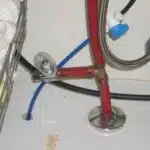


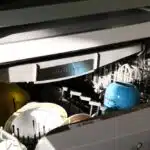


![How To Get Hair Out Of A Bathtub Drain 8 2/365 [Bathtub Drain]](https://green-life.blog/wp-content/uploads/2023/05/cOEu5edpkejq-150x150.jpg.webp)






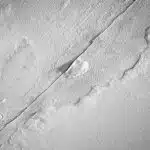


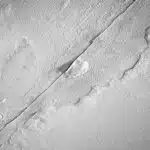
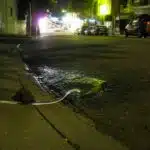


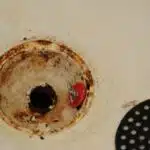

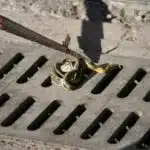

![How To Replace A Bathtub Drain In A Mobile Home 26 2/365 [Bathtub Drain]](https://green-life.blog/wp-content/uploads/2023/05/3ft8KAJsNnjq-150x150.jpg.webp)


